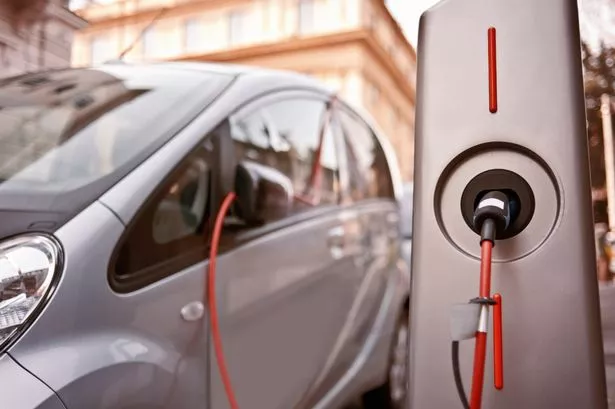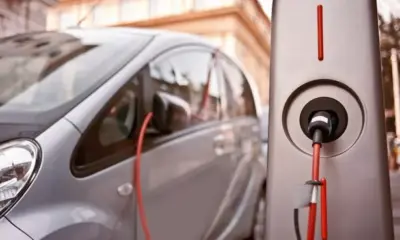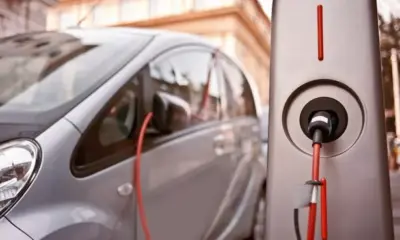Science
EV Drivers Warned of Fire Risks and Chemical Exposure

A recent study from Allianz Commercial has raised alarms regarding the potential fire risks associated with electric vehicles (EVs). The report suggests that, while EVs are not statistically more likely to catch fire than traditional internal combustion engine vehicles, significant risks during charging could lead to severe consequences, including explosions and the release of harmful chemicals.
The Global Risk Dialogue report highlights that the number of electric vehicles on the roads could surpass 200 million by the end of this decade. Despite the growing popularity of EVs, experts caution that the increasing reliance on these vehicles could expose drivers and emergency responders to new hazards.
Rafael Rioboo, Regional Head of Risk Consulting for Allianz Commercial’s Iberia region, emphasizes that the most dangerous phase for an electric vehicle is not while it is in operation but rather during the charging process. He noted that overheating or short-circuiting of electric vehicle chargers could compromise the vehicle’s battery system, leading to catastrophic failures.
Risks of Thermal Runaway
The report details the phenomenon known as “thermal runaway,” which can occur when a battery cell malfunctions. Rioboo warns, “Thermal runaway doesn’t wait for you to act – it ignites, escalates and overwhelms.” This rapid escalation can result in fires, explosions, and the release of heavy metals and toxic chemicals such as carbon monoxide and hydrogen cyanide. These risks pose significant threats not just to vehicles but also to individuals and property, particularly for first responders who may arrive at the scene of an incident.
In response to these concerns, police forces are implementing strategies to manage “post-crash battery hazards” by isolating vehicles involved in accidents. This proactive approach aims to minimize the risks associated with damaged battery systems in the aftermath of crashes.
Comparative Fire Risks
Despite the grave warnings, there is a counterpoint to the narrative surrounding EV fire risks. Colin Walker, head of transport at the Energy and Climate Intelligence Unit, asserts that data consistently shows electric vehicles are significantly less likely to catch fire compared to their petrol and diesel counterparts. He stated, “All the data shows that EVs are just much, much less likely to set on fire than their petrol equivalent,” adding that many incidents involving traditional vehicles go unreported.
Moreover, Paul Christensen, a professor of pure and applied electrochemistry at Newcastle University, has conducted research focused on battery safety. He warns of the potential for “vapour cloud explosions and rocket flames” when gases escape from damaged battery cells. His findings underscore the importance of understanding the risks associated with battery technology in the context of increasing EV adoption.
As electric vehicles continue to gain traction globally, the findings from Allianz Commercial highlight the need for heightened awareness among drivers regarding the risks associated with charging and battery maintenance. With more than 200 million EVs projected to be on the roads by 2030, addressing these safety concerns will be crucial for ensuring the safe integration of electric vehicles into everyday life.
-

 Entertainment3 months ago
Entertainment3 months agoAnn Ming Reflects on ITV’s ‘I Fought the Law’ Drama
-

 Entertainment4 months ago
Entertainment4 months agoKate Garraway Sells £2 Million Home Amid Financial Struggles
-

 Health3 months ago
Health3 months agoKatie Price Faces New Health Concerns After Cancer Symptoms Resurface
-

 Entertainment3 months ago
Entertainment3 months agoCoronation Street’s Carl Webster Faces Trouble with New Affairs
-

 Entertainment3 months ago
Entertainment3 months agoWhere is Tinder Swindler Simon Leviev? Latest Updates Revealed
-

 Entertainment4 months ago
Entertainment4 months agoMarkiplier Addresses AI Controversy During Livestream Response
-

 Science1 month ago
Science1 month agoBrian Cox Addresses Claims of Alien Probe in 3I/ATLAS Discovery
-

 Entertainment4 months ago
Entertainment4 months agoKim Cattrall Posts Cryptic Message After HBO’s Sequel Cancellation
-

 Entertainment3 months ago
Entertainment3 months agoOlivia Attwood Opens Up About Fallout with Former Best Friend
-

 Entertainment6 days ago
Entertainment6 days agoCoronation Street Fans React as Todd Faces Heartbreaking Choice
-

 Entertainment3 months ago
Entertainment3 months agoMasterChef Faces Turmoil as Tom Kerridge Withdraws from Hosting Role
-

 Entertainment4 months ago
Entertainment4 months agoSpeculation Surrounds Home and Away as Cast Departures Mount













